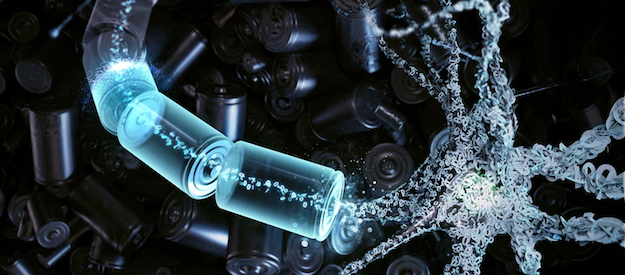
AI method slashes rechargable EV battery development time
By DE Staff
General AutomotiveMachine learning algorithm cuts battery trial-and-error testing cycle by 98 percent, say Stanford researchers.

Using machine learning, a Stanford-led research team has slashed battery testing times – a key barrier to longer-lasting, faster-charging batteries for electric vehicles. (Image credit: Cube3D)
“In battery testing, you have to try a massive number of things, because the performance you get will vary drastically,” said Stefano Ermon, an assistant professor of computer science at Stanford University. “With AI, we’re able to quickly identify the most promising approaches and cut out a lot of unnecessary experiments.”
In a study, published in Nature, the team, led by Stanford professors Stefano Ermon and William Chueh, detailed their efforts to find the best way to charge an EV battery in 10 minutes while maximizing its overall lifetime. Toward that goal, the researchers developed an algorithm that could predict how different battery designs would respond after only a few charging cycles. The software also determined what charging approaches to focus on or ignore.
By reducing both the length and number of trials, the researchers say they’re approach cut the testing process from almost two years to 16 days.
While the team focused on extreme fast charging, they say their algorithm could potentially optimize other areas of battery development including battery chemistry, physical design, manufacturing and storage. Toward that end, the Stanford team says it will make its machine learning and data collection system freely available to other battery scientists.
“This is a new way of doing battery development,” said Patrick Herring, co-author of the study and a scientist at the Toyota Research Institute. “Having data that you can share among a large number of people in academia and industry, and that is automatically analyzed, enables much faster innovation.”
www.stanford.edu
